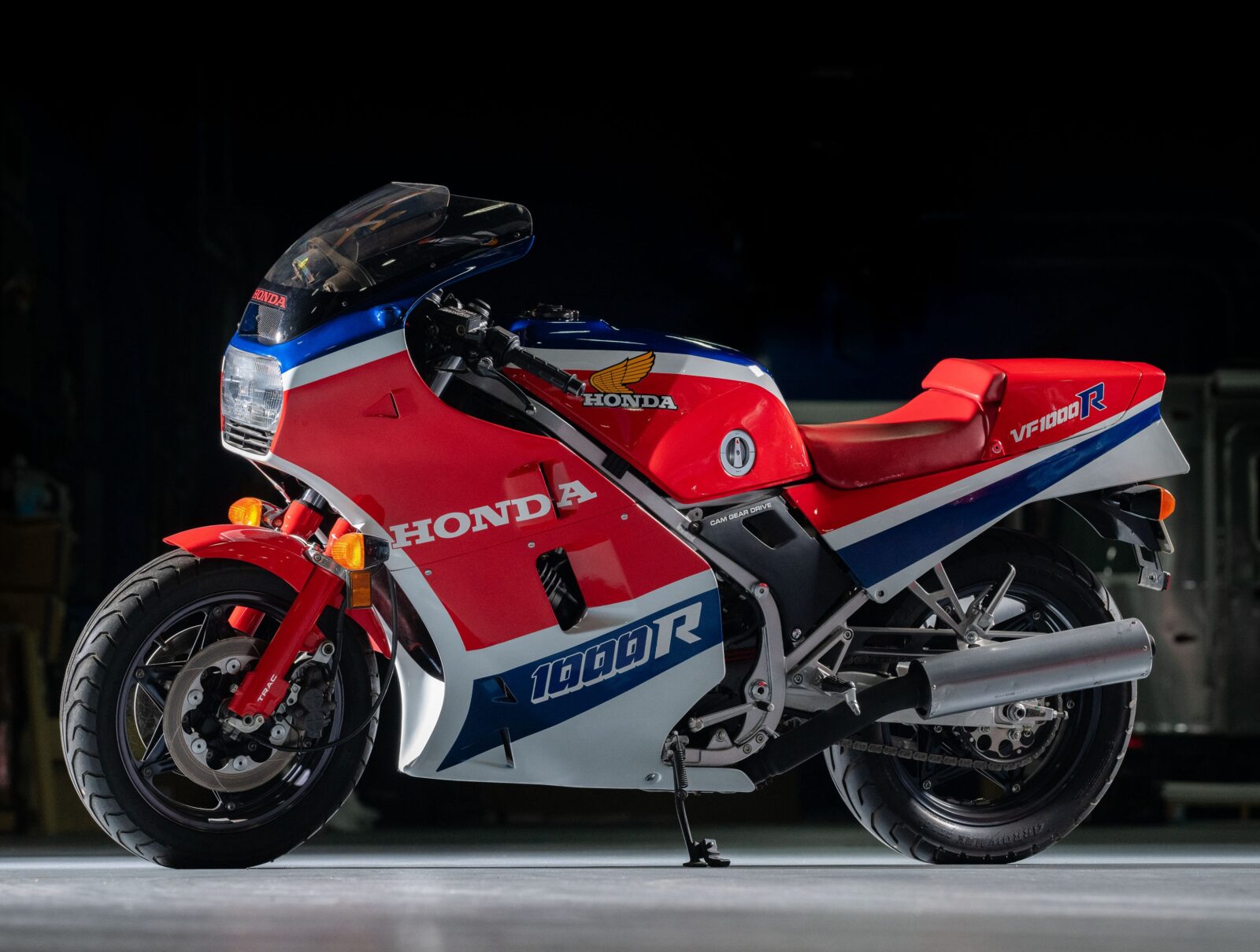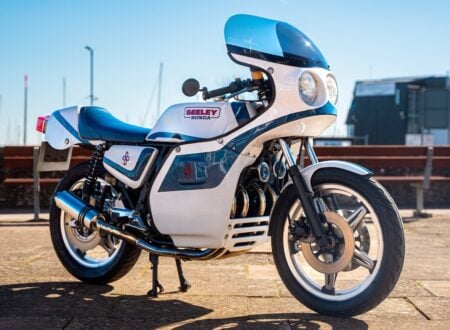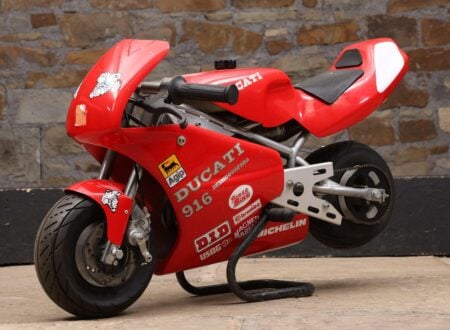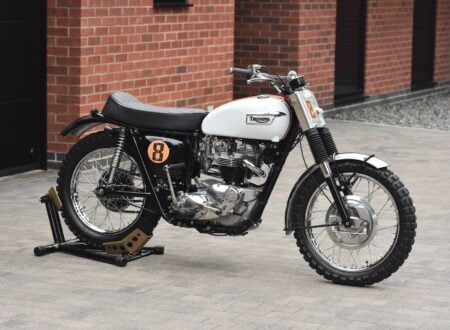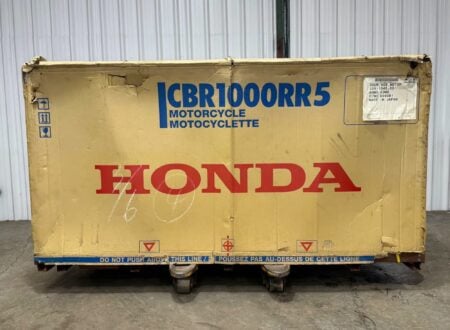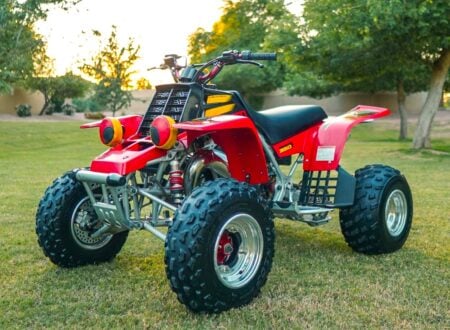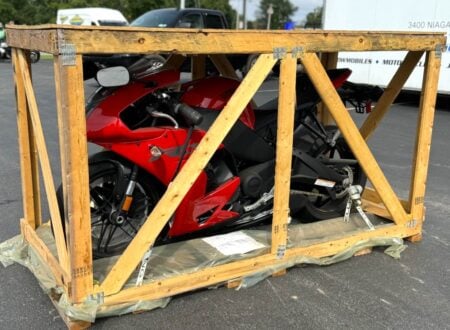This is a remarkably well-preserved Honda VF1000R superbike from 1984. Interestingly, this bike was first owned by motorcycling legend Malcolm Smith, and it’s only covered 795 miles since new.
The VF1000R debuted in 1984 as Honda’s newest homologation special, designed to allow the Japanese company to use a slew of new technologies in the production bike-based racing classes of the time.
Fast Facts – The Honda VF1000R
- The 1984 Honda VF1000R shown in this article is a remarkably well-preserved example, and was originally owned by motorcycling legend Malcolm Smith. It has only covered 795 miles since new and it’s been preserved well, making it one of the best surviving examples of its kind outside of a museum.
- The Honda VF1000R was introduced in 1984 essentially as a homologation special, incorporating advanced technologies for production bike-based racing classes. It was the fastest production motorcycle in the world at the time, with 122 bhp at 10,000 rpm. The VF1000R featured a sophisticated 998cc 90º V4 engine with gear-driven double overhead cams, four valves per cylinder, a 10.7:1 compression ratio, and an electronic ignition.
- The VF1000R used a stiff square-section steel tube frame with advanced suspension, including 41mm forks with air assistance and adjustable damping, Honda’s TRAC anti-dive system, and a Honda Pro-Link monoshock system in the rear. It also had race-specification braking with dual four-piston calipers on floating rotors up front and a single rear disc.
- Surviving examples of the VF1000R are now sought after by collectors, viewed as a high-water mark of early 1980s motorcycle engineering. This particular VF1000R, in original and museum-quality condition, is set to be auctioned by RM Sotheby’s with an estimated price of $8,000 to $12,000 USD and no reserve, offering a rare opportunity for enthusiasts to acquire a piece of motorcycling history.
The Fastest Production Motorcycle In The World
At the time of its release in 1984, the Honda VF1000R was the fastest production motorcycle in the world, with 122 bhp at 10,000 rpm, a heady figure for the time. Honda had set the budget on fire and given the engineers free rein on the VF1000R, and it was a technological tour de force as a result.
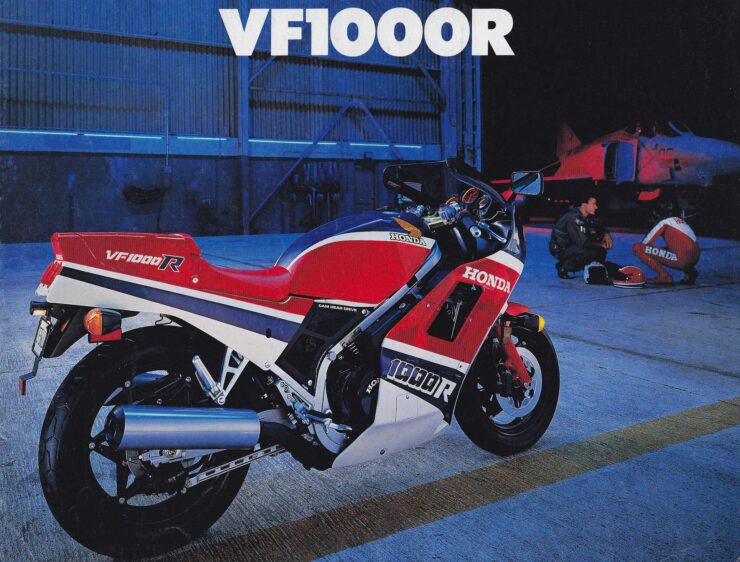

The VF1000 series of motorcycles would consist of three major models, the VF1000F, the VF1000R, and later, the VF1000F2. Of these three bikes, the VF1000R was by far the most sophisticated, the most powerful, the quickest, and the most desirable.
The Honda VF1000R: Specifications
The VF1000R was powered by one of the most advanced engines that had ever been fitted to a production motorcycle up until that point in history, it was a 998cc 90º V4 with gear-driven double overhead cams per bank, four valves per cylinder, a 10.7:1 compression ratio, and an electronic ignition.
The bike was built around a version of the same square-section steel tube frame as the less complex (and less expensive) VF1000F, but the suspension was significantly improved, with 41mm forks that had air assistance, adjustable damping, and Honda’s TRAC anti-dive system (Torque Reactive Anti-dive Control).
In the rear, the VF1000R had the Honda Pro-Link monoshock system offering full adjustability. Braking was also race-specification, with dual four piston calipers up front on floating rotors, with a single disc on the rear.
Much like Honda’s racing machines from the era, the VF1000R had a full fairing, which help differentiate it from the similar VF1000F “Interceptor” which had only an upper fairing.
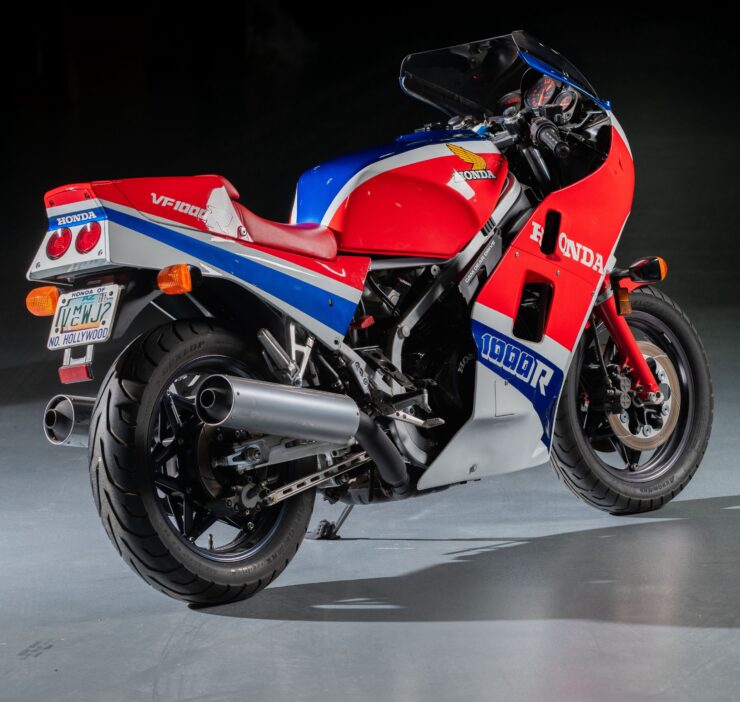

The Achilles Heel Of The VF1000R
The Achilles heel of the VF1000R would ultimately be its weight. The series of advanced technologies that had been included when the bike was designed all increased the total mass, and by the time it was in production the bike weighed close to 600 lbs with a full tank of fuel.
By comparison, the less expensive (and less complex) VF1000F weighed 85 lbs less and produced only 6 fewer horsepower, turning out 116 bhp versus the 122 bhp of the VF1000R. The suspension, brakes and power output on the “F” model may have been less impressive, but many riders opted for it due to the lower weight and the significant cost difference.
Surviving examples of the Honda VF1000R are now much sought after by collectors, and they’re seen as a high-water mark of motorcycle engineering from the era.
Who Is Malcolm Smith?
Malcolm Smith is a Canadian-American motorcyclist who rose to fame in the 1960s as one of the pre-eminent off-road racers in North America. Smith would go on to win eight gold medals in the grueling International Six Day Trial from the mid-1960s to the mid-1970s.
Above Video: This video shows Malcolm Smith discussing some of his older motorcycles, and talking and their history and his own racing history.
He became one of very few people to win the Baja 1000 on both motorcycles and in cars, winning three times in each just for good measure.
He would become a four-time winner of the Baja 500, and a two-time winner of the Mint 400 in Nevada and the Roof of Africa Rallye. He also won the Atlas Rallye in the mountains of Morocco, and he would race in the Paris Dakar Rally twice.
Later in life after hanging up his riding boots, Smith would establish his own motorcycle gear company named Malcolm Smith Gold Medal Products, which was later renamed Malcolm Smith Racing, then simply MSR.
He now owns a major motorcycle dealership in Riverside, California which he operates with his family. Smith was indicted into the Off-Road Motorsports Hall of Fame in 1978, then into the Motorsports Hall of Fame of America in 1996, and finally into the Motorcycle Hall of Fame in 1998.
The 1984 Honda VF1000R Shown Here
The motorcycle you see here is a Honda VF1000R from the very first year the model was introduced, 1984. As such, it’s the Honda VF1000RE version, which was later succeeded by the Honda VF1000RF, and finally by the Honda VF1000RG.
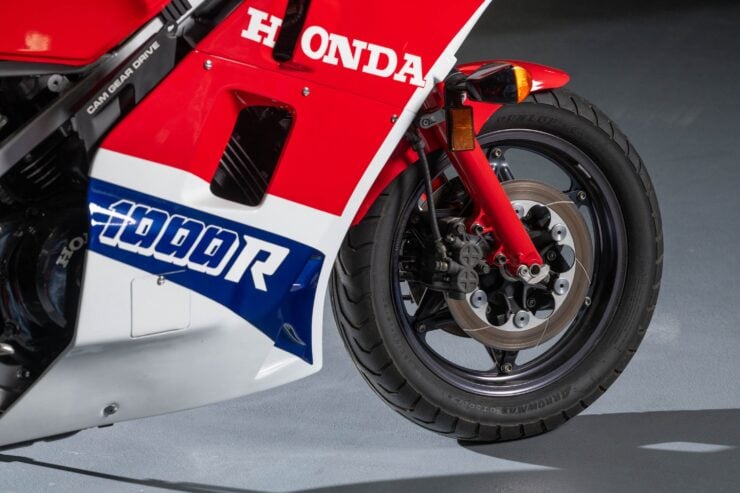

This is the best-preserved VF1000R that we’ve ever seen, remaining in original condition throughout in museum quality. It was bought new by Malcolm Smith and as noted further up, it’s covered just 795 miles since new.
The bike is now due to roll across the auction block with RM Sotheby’s in a few days time with a rather reasonable price guide of $8,000 – $12,000 USD and no reserve. If you’d like to read more about it or register to bid you can visit the listing here.
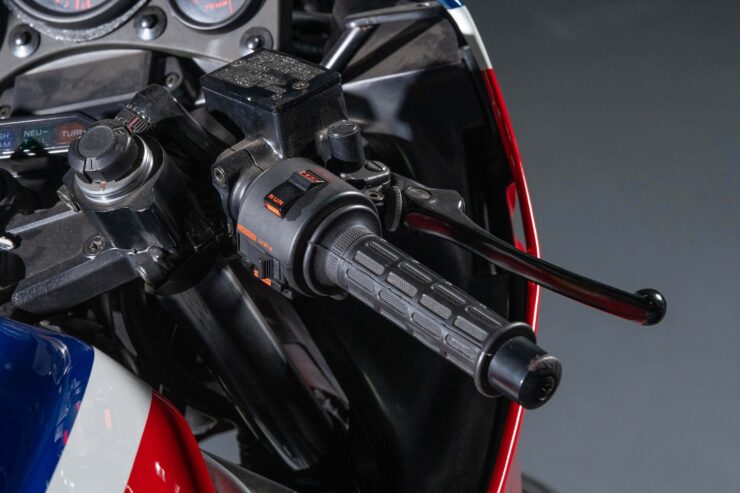
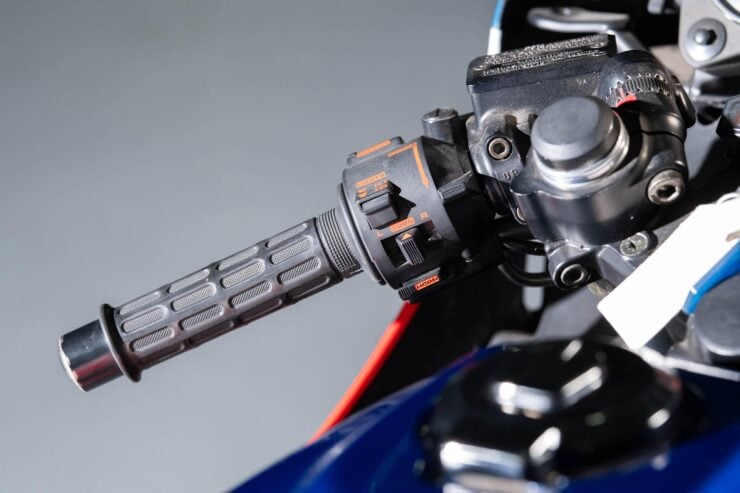
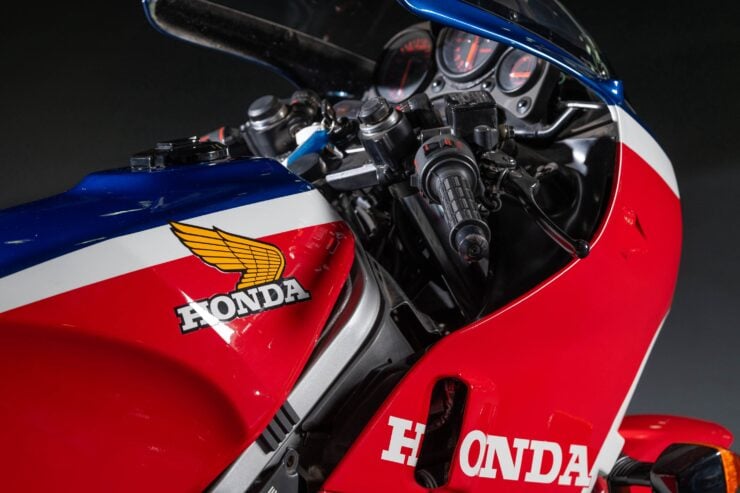
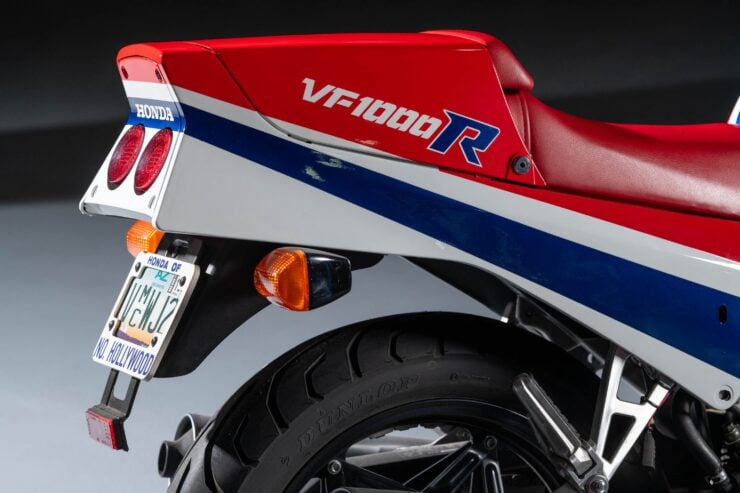
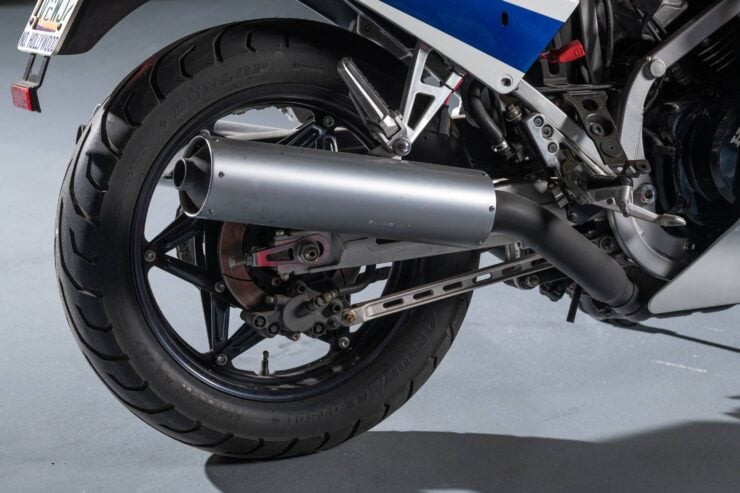
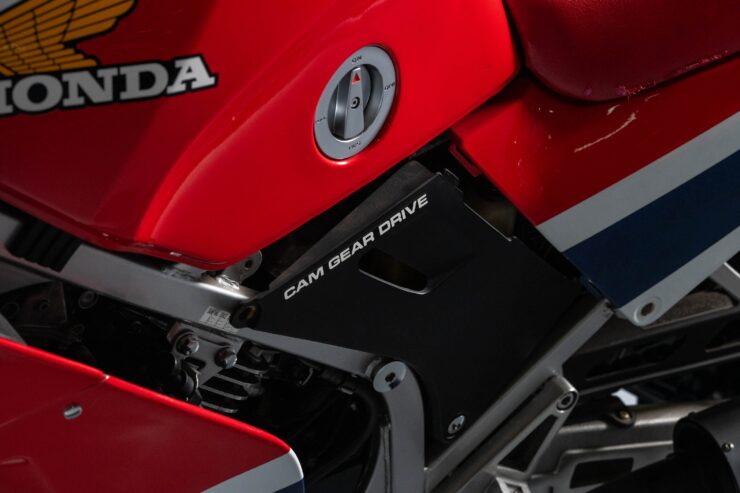
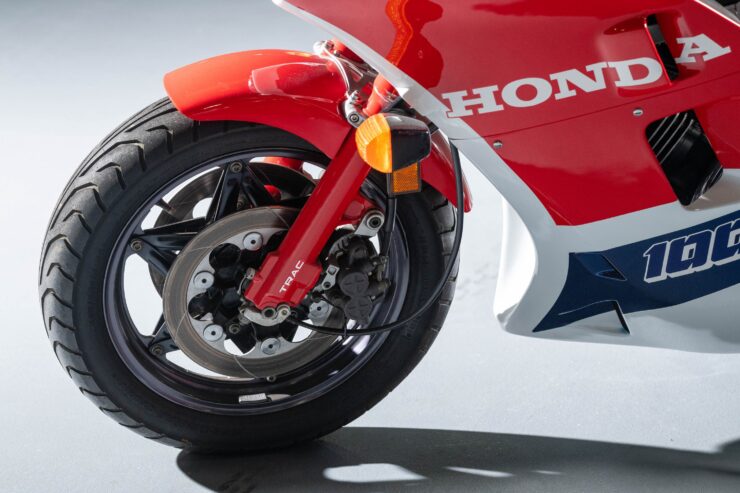
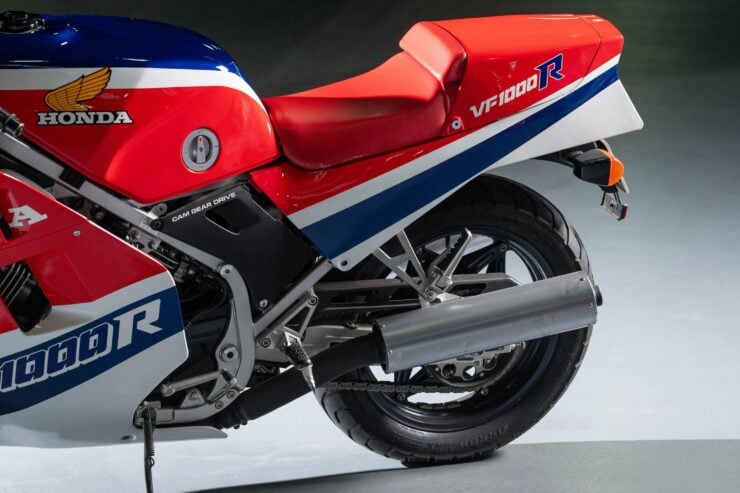
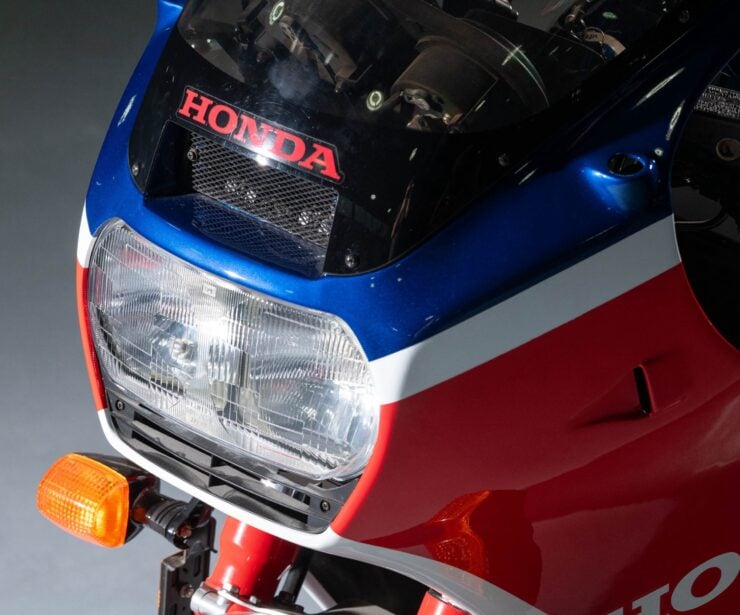
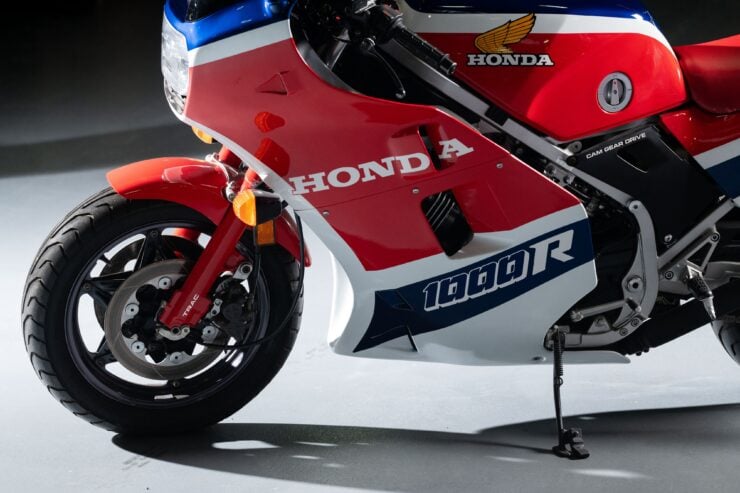
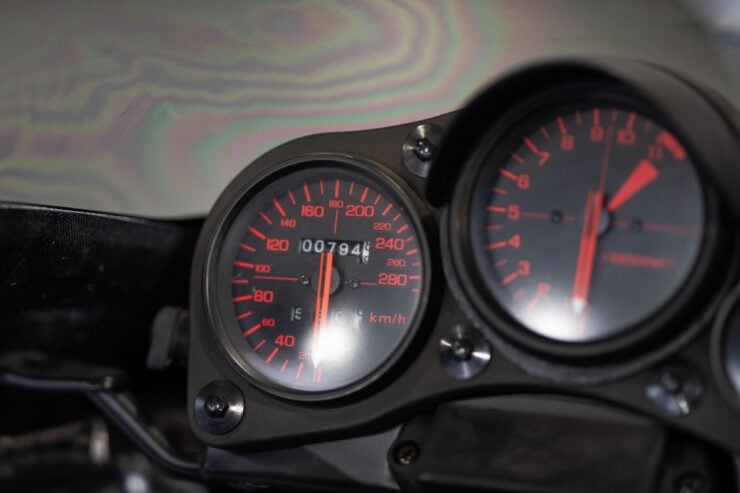
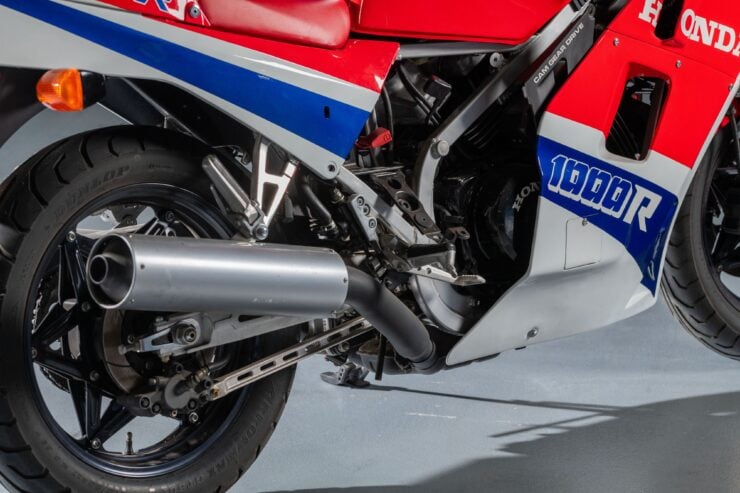
Images: Darin Schnabel ©2024 Courtesy of RM Sotheby’s

